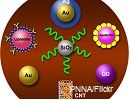
The national body that sets occupational health and safety standards has released its new standard on nanomaterials in the workplace.
The Canadian Standard Association has identified that workplace hazards are surfacing from exposure to nanoparticles.
“This standard has been developed because of potential occupational health issues arising from exposure to nanoparticles in the workplace, particularly from inhalation,” explains CAUT Health & Safety Officer Laura Lozanski. “Inhaling ultrafine particles can lead to respiratory irritation, cardiovascular disease, and cancer.”
Nanomaterials are ultrafine particles or chemical substances used at a very small scale in various technologies and items. In a work environment, these nanomaterials appear in photocopiers, cell phones, construction materials, pharmaceuticals, and insulators.
While there are no current definitive preventative measures to control exposure to nanoparticles, Lozanski explains that the new standard sets guidelines for “control banding”.
“Control banding consists of steps of incremental exposure risk coupled with best practice prevention and hazard controls currently available,” she added.
The Standard embraces the fundamental principles of the precautionary principle, the role of the worker representative, and worker participation in addressing nanomaterial hazards.
The document lays out the details of information gathering, control banding implementation (including control strategies) and performance, review and continual improvement.
“Academic staff associations are encouraged to review the new document and discuss it with campus health and safety representatives,” said Lozanski.
Media Contact
Angela Regnier, Communications Officer, Canadian Association of University Teachers; 613-726-5186 (o); 613-601-6304 (cell).